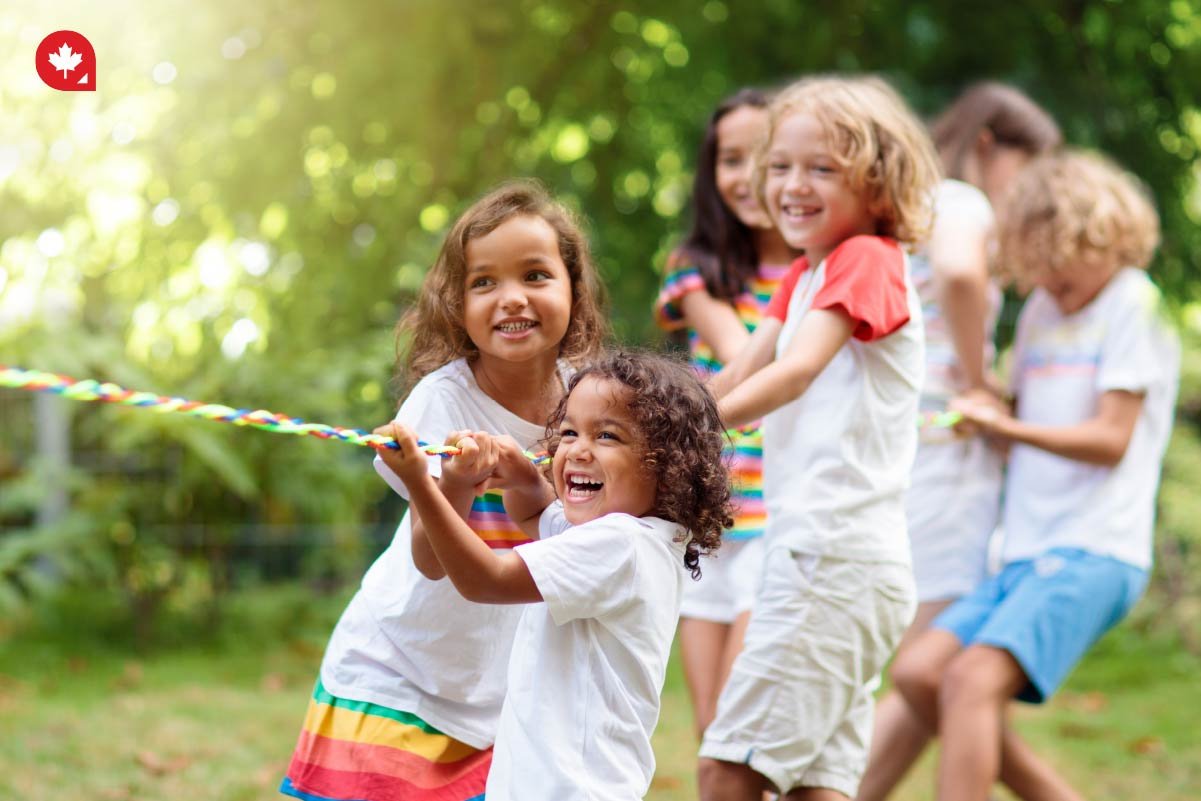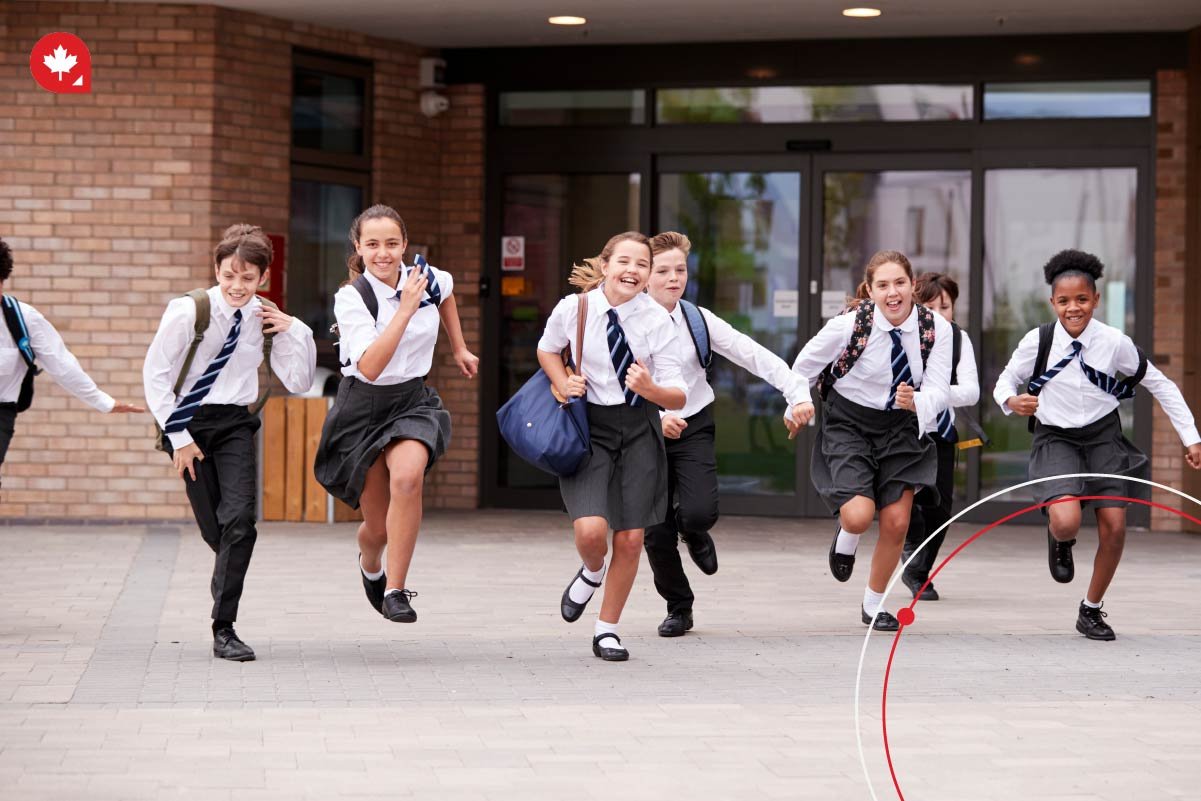So you've survived the Canadian school year, eh? As the textbooks get packed away and the days grow longer, it's time to embrace the magic of Summer in Canada. Whether you're a newcomer to the country or a seasoned citizen, this vast and beautiful land offers a treasure trove of experiences waiting to be discovered.
This guide will be your compass, navigating you through the top things to do in Canada once the school bell rings its final chime. So, grab your sunscreen, pack your sense of adventure, and get ready to make memories that will last a lifetime.
The Canadian School Year

Schools in Canada typically follow a provincial system, with variations depending on location. Generally, the school year runs from September to June, with a long summer break following. This extended vacation offers a fantastic opportunity to explore the country, unwind, and recharge for the upcoming year. Here's a breakdown of the school year for reference.
| Month | Description |
|---|---|
| September | Schools typically reopen after Labor Day, which falls on the first Monday of September. |
| October | Halloween festivities and fall foliage create a vibrant atmosphere across the country. |
| December | Winter break begins around mid-December and lasts until early January. This is a popular time for family gatherings and winter sports. |
| March | Spring break offers a shorter break, usually lasting a week, around March. |
| June | The school year wraps up in June, with graduation ceremonies marking the end of another academic year. |
| July & August | Summer break officially begins, offering a well-deserved break for students and educators alike. |
Learn more about levels of education in Canada.
Vacation Time in Canada
Summer in Canada is a time for celebration. With longer days and warmer weather, Canadians take full advantage of the outdoors. Here's a glimpse into what you can expect.
Weather
The specifics vary by region, but generally, summers offer warm temperatures, with highs reaching the mid-20s to low 30s Celsius (70s to low 80s Fahrenheit) in most areas. Rainfall can occur, but there's also plenty of sunshine to soak up.
Outdoor Activities
National parks come alive with hikers, campers, and kayakers. Beaches and lakes become hubs for swimming, sunbathing, and water sports like canoeing, paddle boarding, and windsurfing. Hiking trails offer stunning scenery, while mountain biking enthusiasts can explore dedicated pathways.
Festivals and Events
Cities and towns host vibrant festivals celebrating music, food, art, and culture. There's something for everyone from the world-famous Calgary Stampede to smaller local fairs. Many communities organize outdoor concerts and movies under the stars, creating a festive atmosphere.
Relaxation and Rejuvenation
Summer break is a time to unwind after a busy school year. Canadians enjoy spending time with family and friends, taking day trips, or simply relaxing by the pool or at the beach.
Top Things to do in Canada Once the School Year Ends

Summer in Canada is a time for exploration, relaxation, and making memories. As a newcomer family, you have a unique opportunity to experience the best of what Canada offers during this warm and vibrant season. Here are some ideas to keep your children entertained and engaged throughout the summer break.
Explore the Great Outdoors
Canada boasts stunning national and provincial parks. Pitch a tent and spend a few nights camping under the stars. Hike through scenic trails, go canoeing on a calm lake, or try your hand at fishing. These experiences are fun and educational, allowing you to teach your children about local plants and wildlife. Remember to book campsites in advance, especially during peak season.
Unwind at the Beach or Pool
Beat the summer heat with a refreshing ocean, lake, or community pool dip. Many cities offer public beaches with swimming areas and splash pads, perfect for keeping cool on hot days. Pack a picnic lunch and some sunscreen, and enjoy a relaxing day by the water.
Embrace Local Culture
Immerse yourselves in Canadian culture by visiting historic cities like Quebec City or St. John's. Explore vibrant neighborhoods in Toronto or Montreal, experiencing the diverse culinary scene and unique shops. Attend local festivals celebrating music, food, and art, soaking up the festive atmosphere.
Learn Through Play
Summer camps offer a fun way for children to continue learning while having a blast. Choose from traditional sleepaway camps focused on outdoor activities to day camps with specific themes like photography, art, or science. Many camps cater to newcomer children, providing a supportive environment to learn new skills and make friends.
Discover New Sports
With warm weather comes the opportunity to try new sports. Enroll your child in a team sport like baseball, soccer, or rugby, or opt for individual activities like tennis or swimming lessons. Consider introducing them to sports popular in your home country, keeping them connected to their heritage.
Foster Creativity
Encourage your children to explore their creativity by picking up a new hobby. From painting and drawing to origami and cooking, the possibilities are endless. Summer is a time for self-discovery, so let them experiment and find something they're passionate about.
Build Community Connections
Head to the local park or community center to socialize with other families and build a support network. Playgrounds and splash pads are popular with children, providing a fun environment for them to interact and make friends.
Savor Seasonal Produce
Summer is prime time for fresh fruits and vegetables. Take your children to local farms or orchards to experience the joy of picking your own produce. Alternatively, visit a farmer's market to stock up on fresh, seasonal ingredients and support local growers.
Grow Your Own Food
Plant a small vegetable garden on your balcony or backyard patch. This activity teaches children about responsibility and allows them to enjoy the fruits (and vegetables) of their labor. This is also an excellent opportunity for them to learn more about the agricultural sector in Canada.
Explore the World of Books
Public libraries are a treasure trove of resources and offer free summer reading programs encouraging children to keep reading for pleasure. Libraries also provide ESL resources for newcomer children and books about various cultures, allowing them to connect with their heritage.
Visit Local Attractions
Many kid-friendly attractions like museums, zoos, aquariums, and amusement parks come alive during summer. Plan day trips to explore these exciting places, learn something new, and create lasting memories.
Gain Valuable Experience (For Older Kids)
Summer jobs and volunteer opportunities are common for teenagers in Canada. These experiences help them develop skills like responsibility, money management, and teamwork, boosting their resumes and preparing them for future careers.
Give Back to the Community
Volunteering is a rewarding way to spend some of your summer. Encourage your children to volunteer for a few hours a week at an organization that aligns with their interests, such as a library or animal shelter. You can also volunteer as a family at a food bank or local charity event.
Hit the Open Road
Embark on a family road trip to explore a new region of Canada. This is a fantastic way to discover diverse landscapes, cultures, and historical sites. Pack the car, choose a destination, and create an unforgettable adventure together.
Learn more about car rentals in Canada.
Connect with Nature
Summer is the perfect time for birdwatching. No binoculars are necessary! Encourage your children to listen to and observe the various birds in your neighborhood. This activity fosters an appreciation for nature and its inhabitants.
These are just a few ideas to get you started. With some planning and exploration, you can make this summer an enriching and memorable experience for your entire family.
Learn more about the hidden gems to explore during Summer in Canada.
Vacation Activities for International Students in Canada
Summer break unlocks a treasure trove of experiences for international students in Canada. Beyond the textbooks and exams lies a vast and vibrant country waiting to be explored. Here are some exciting ways to make the most of your summer vacation.
Working While on Vacation in Canada
As an international student in Canada on a study permit, you have more flexibility to work during official school breaks designated by your Designated Learning Institution (DLI). These breaks typically include winter and summer holidays, as well as reading weeks.
During these designated school breaks, you're not restricted by the usual 20-hour workweek limit for off-campus jobs. This opens doors to several opportunities. You can maximize your earnings by taking advantage of the break to work full-time hours. This can help you cover your expenses or save for future tuition fees. It's also a great chance to gain valuable work experience.
Consider working a full-time internship or temporary position related to your field. This can provide valuable resume-building experience and help you network within your chosen industry.
Discover the best-paying jobs for students in Canada.
Maintaining Your Full-time Student Status
One key thing to remember when working unlimited hours during breaks: you must maintain your full-time student status. This means being registered as a full-time student in a program with your DLI before and after the scheduled break in which you plan to work full-time. Additionally, you cannot work full-time during a break before you've begun your studies. For example, you would only be eligible to work full-time during the summer break after your very first semester starts.
With the freedom of unlimited work hours during breaks, you can choose the path that best suits your needs. You could focus on one full-time job to maximize your earnings and gain concentrated experience. Balancing work with potential coursework or leisure activities is also an option. Consider taking on part-time positions or seeking overtime opportunities at your existing job. You can even explore different industries by working two part-time jobs in areas related to your interests.
Remember, while working during breaks can be beneficial, it's important always to prioritize your studies. Ensure you're well-rested before returning to your academic schedule to optimize your learning experience.
Budget Travel Adventures
Canada offers a variety of budget-friendly travel options. As a newcomer to Canada with a limited budget, consider hostels or dorm rooms instead of hotels, take advantage of free walking tours and public transportation passes, and pack lunches and snacks for day trips. Look for student discounts on attractions and transportation, and explore free outdoor activities like hiking and swimming. Couchsurfing, a hospitality exchange network, can connect you with locals who might offer free accommodation in exchange for cultural exchange.
Woofing (Willing Workers on Organic Farms)
Immerse yourself in rural life and sustainable practices by participating in a Woofing program. You'll work on organic farms in exchange for accommodation and meals, gaining valuable agricultural experience while exploring the countryside. This is a fantastic way to connect with nature, learn about sustainable farming, and improve your English or French through daily interactions with farm owners.
Language Immersion Programs
If you are a newcomer to Canada, sharpen your English or French language skills by enrolling in an immersive program. Many universities and colleges offer intensive summer courses that combine classroom learning with practical activities and cultural excursions. Immerse yourself in the language by living with a homestay family or in student residences, practicing your skills in everyday situations.
Hiking and Camping
Lace up your hiking boots and explore Canada's breathtaking mountainous landscapes. Hike through the majestic peaks of Banff National Park, conquer the challenging terrain of Gros Morne, or camp under the vast Canadian night sky in a National Park. Join guided hikes or camping excursions to learn about local ecosystems and connect with fellow adventurers.
Kayaking and Canoeing
Embark on a watery adventure by kayaking or canoeing through stunning lakes and archipelagos. Explore the Thousand Islands in Ontario, a labyrinth of over 1,800 islands, or paddle through the calm waters of Nova Scotia's coastline. Witness stunning scenery, encounter diverse wildlife, and experience the serenity of nature from a unique perspective.
Explore Bustling Cities and Charming Towns
Immerse yourself in the vibrant energy of Canadian cities. Explore Toronto's multicultural neighborhoods, soak up the European charm of Quebec City, or discover the historical sites of St. John's, Newfoundland. Visit museums, art galleries, and local festivals to get a taste of Canadian culture. Venture beyond major cities and explore charming towns with unique personalities, offering a glimpse into authentic Canadian life.
Putting Together the Perfect Summer Vacation in Canada

Planning a Canadian summer vacation for the kids requires some prep. We take a look at how to get it all together, from budgeting to booking and, most importantly - making memories.
Budget and Time
When planning summer vacation as a newcomer to Canada, consider your budget and timeframe. Canada is a vast country, so prioritize locations that interest you most and your children.
Research and Booking
Research transportation options like flights, trains, or buses. Book accommodation in advance, especially if you're traveling during peak season. Look for scholar and student discounts and special offers.
Activities
Plan activities that cater to your interests. If you're traveling with family, choose options suitable for all ages. Consider purchasing a travel pass to save money on admissions to various attractions.
Pack Smart
Research the weather conditions in the regions you'll be visiting. Pack comfortable shoes for exploring, swimwear for beach days, and warm layers for evenings, especially in mountainous areas.
Embrace the Adventure
Summer break allows you and the kids to relax, have fun, and create lasting memories. Here are some ways to truly embrace the adventure during your Canadian vacation.
Go Beyond the Tourist Trail
Venture off the beaten path and explore hidden gems. Ask locals for recommendations on unique restaurants, shops, or scenic viewpoints. Consider joining a small-group tour with a focus on local culture and off-the-grid experiences.
Step Outside Your Comfort Zone
Challenge yourself by trying something new. Take a white-water rafting trip, go ziplining through a forest canopy, or enroll in a short wilderness survival course. Allow your newcomer children to fully embrace the thrill of new experiences and discover hidden talents or passions.
Make Time to Learn a New Skill
Immerse yourself in Canadian culture by taking a short cooking class and learning to prepare a traditional dish. Sign up for a pottery workshop, or try kayaking or stand-up paddle boarding. Returning home before the Canadian school year with a newfound skill adds another layer of accomplishment to your child's summer adventure.
Document Your Journey
Keep a travel journal to record your experiences, thoughts, and funny anecdotes. Capture the beauty of the landscapes and candid moments with photos and videos. Share your adventures on social media or create a travel blog to inspire others and keep the memories alive.
Learn how to make the most of your first summer in Canada.
FAQs
When Does the School Year in Canada Start Again?
The Canadian school year varies slightly by province and territory but typically starts in September and finishes in June. Think fall to summer! Class schedules for schools in Canada usually run from mornings, like 8:30 am, to afternoons, like 3:00 pm or from 9:00 am to 3:30 pm, Monday through Friday.
What Are the Conditions for International Students in Canada to Work Full-time During a Break?
The ability to work full-time during breaks hinges on maintaining full-time student status. This means being enrolled full-time in a program with your DLI both before the break you wish to work full-time in and the semester following it.




